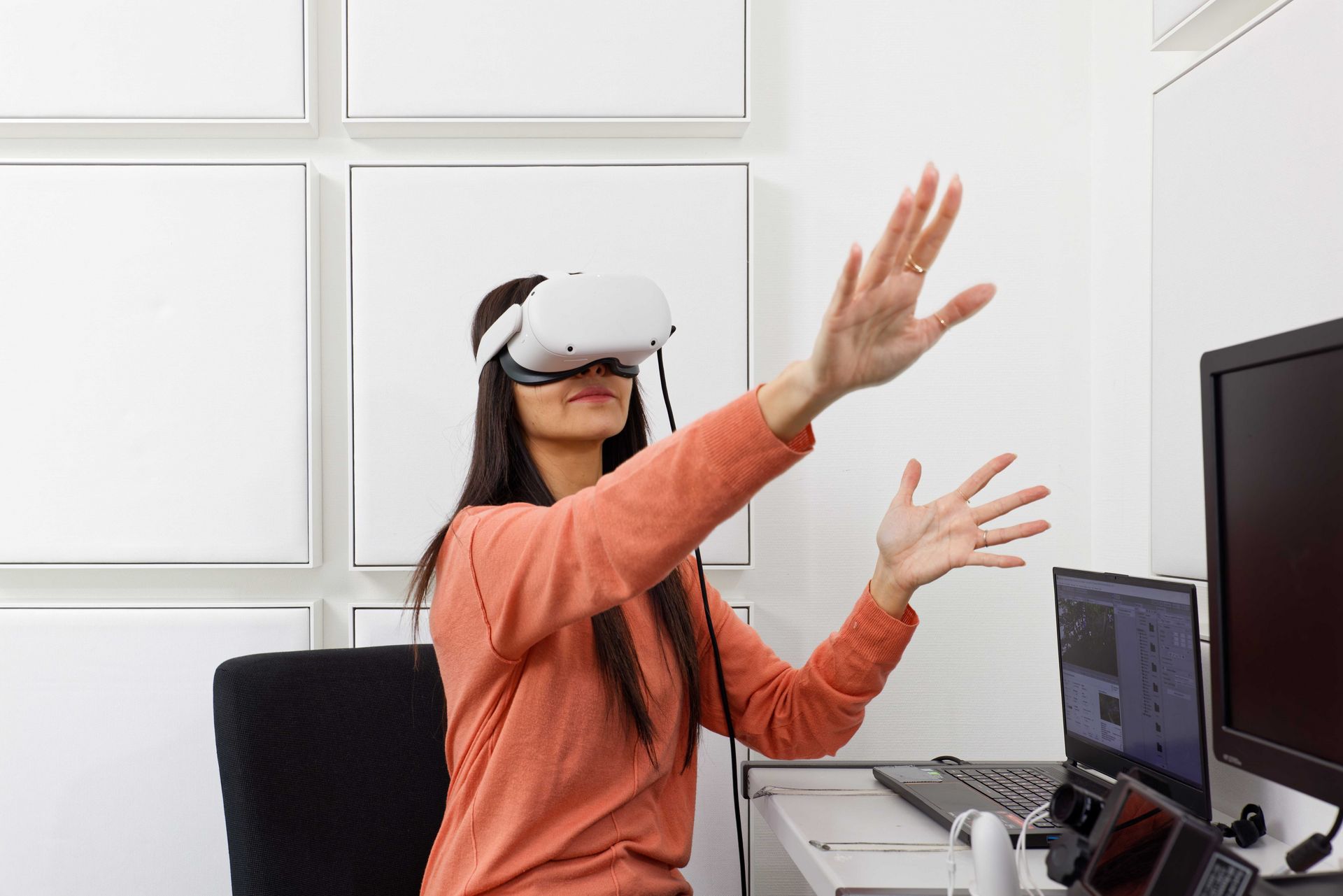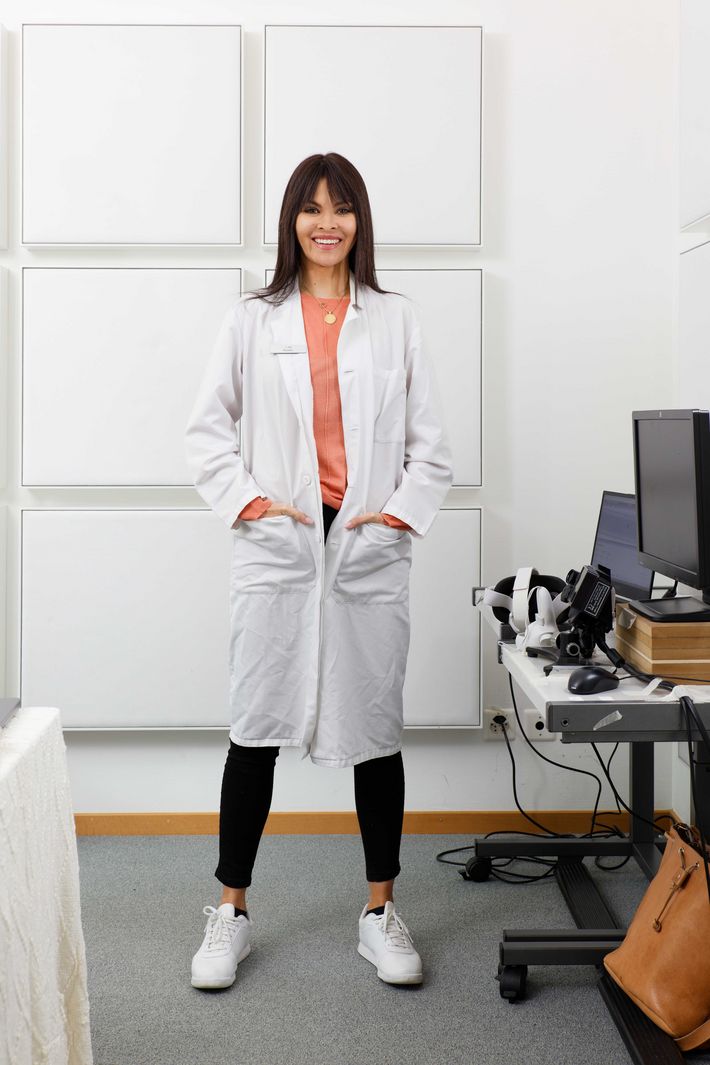
Actual pain relief through virtual reality
During her MedTech Entrepreneur Fellowship, Jasmine Ho developed a virtual reality treatment method to help patients with chronic pain. Now the neuropsychologist is further expanding her approach in two projects funded by the Swiss National Science Foundation. And she has plans for a start-up company.
Jasmine Ho made her first foray into the world of virtual reality (VR) during her studies in the US, when she borrowed a pair of VR goggles from a friend and flew through space. “It was exciting and very cool,” she says, and adds, “But it also made me feel sick.” It was a first-hand experience of how realistic VR can be—and of how interacting with an artificial world can physically impact the body.
Ho says she understood immediately that virtual reality has potential in the field of medicine—but she wasn’t sure exactly how to go about it. Because the topic fascinated her, she accepted a doctoral position at the Department of Psychology at the University of Zurich, where she examined test subjects with body integrity dysphoria (BID), a rare identity disorder characterised by the feeling that a body part—often a leg—doesn’t belong to the rest of the body. Affected persons have a strong desire to have the offending limb amputated, despite the fact that it’s fully functional. Ho stresses that there’s no evidence of brain trauma or psychosis in such cases: “People with BID suffer because their appearance isn’t consistent with their self-image.”
Ho created a virtual reality setting in the lab and used avatars so that patients could see their bodies the way they actually perceive them—with an amputated limb. The studies were designed to gain knowledge about the neurophysiological principles of a virtual embodiment of BID, Ho explains, and not as a treatment method. However, the environment already revealed that VR can alter how these patients experience individual parts of their bodies and that it can reduce their suffering.

Brainwave in the train station
Jasmine Ho had a flash of inspiration in 2019 during an event at Zurich Main Station, when she held a talk about virtual reality and its potential uses in medical care. For example, there are VR-based breathing exercises to manage pain as well as VR games that help stroke patients train targeted movements. And there are virtual groceries where people with eating disorders can practice shopping for healthy items.
In her talk, Ho also touched on the possibility of using VR to treat chronic pain. After the lecture, a woman came up to her and said, “Please, please tell me where I can do this. I absolutely need it!” Ho says, “I had to tell her that the treatment doesn’t exist yet—but I also saw that there’s a real need for it.”
Ho then competed in a “boot camp” at the University of Zurich, where the jury selected her ideas pitch as the winner, a success that in turn motivated her to apply for a MedTech Entrepreneur Fellowship—which she received. During the Fellowship programme—financed by the Werner Siemens Foundation—Ho developed her initial prototype for a VR programme to treat patients with chronic pain.
Trapped in a negative body image
It’s not always possible for doctors to identify the source of chronic pain. “A patient’s body image also plays a role. Some people have the feeling that a painful body part is swollen, although it isn’t confirmed by measurements,” Ho says. These sensations can become so entrenched that the brain no longer interprets the signals picked up by sensory organs correctly. “Our hypothesis is that affected persons are trapped inside a certain body image. We’re trying to disrupt these ingrained pathways and to alter bodily sensations through the VR setting.”
In her experiments, Ho had people with chronic arm or hand pain try out different avatars. When wearing the VR goggles, patients might see their hands as blue or transparent, or longer or shorter than they “really” are. Because blue is associated with cooling, it could lend a sensation of relief to patients with burning pains. Ho confirms that one patient did indeed experience relief: “She moved her hand significantly more in everyday life.” Making an arm or hand look longer in a VR setting could be a useful strategy in osteoarthritis pain treatment. When patients see the longer limb, they experience less pressure on the painful joint.
VR plus psychoactive substances
The studies demonstrated that immersion in a VR setting effectively triggers pronounced changes in how many patients experience their bodies. This was even the case when the researcher made no changes at all to the painful body part in the VR tool. For example, one person took part in four VR sessions over a two-week period. “In the beginning, he wore a bandage twenty-four hours a day and wasn’t able to work,” Ho says. “After the treatment, he rarely wore the bandage and went back to work.”
Jasmine Ho is now further developing her promising system as a postdoc at the University of Zurich thanks to two grants from the Swiss National Science Foundation. She’s also exploring a new direction: during her MedTech Entrepreneur Fellowship, she got to know a researcher who studies psychoactive substances, and the two decided to work together. “Our idea is that psychoplastogens will make the brain more receptive to incoming signals during a VR session,” Ho explains. She hopes this will make the treatment even more effective.
The studies will take a few years, but if Ho and her team succeed in proving the effectiveness of their approach, she’d like to found a start-up. After all, there’s a great need for new treatment methods, as an estimated one in five people worldwide are affected by chronic pain. Virtual reality could one day help relieve this suffering.
![[Translate to English:] Bei Wirbelsäulenversteifungen setzen Chirurgen meist Pedikelschrauben aus Titan in die Wirbelkörper und verbinden sie mit Metallstäben.](/fileadmin/_processed_/2/9/csm_01-spinplanner_5477fa3028.jpg)

